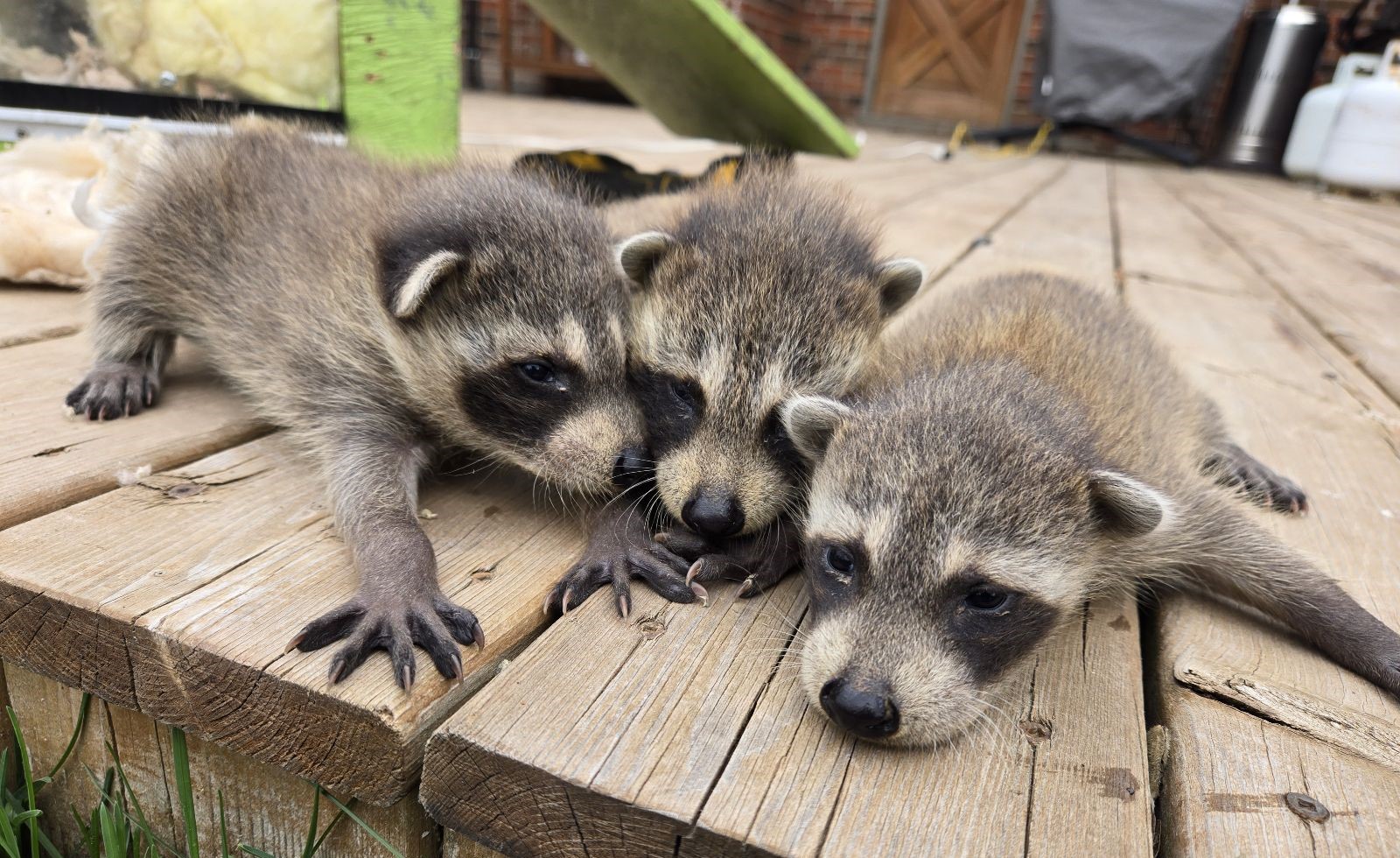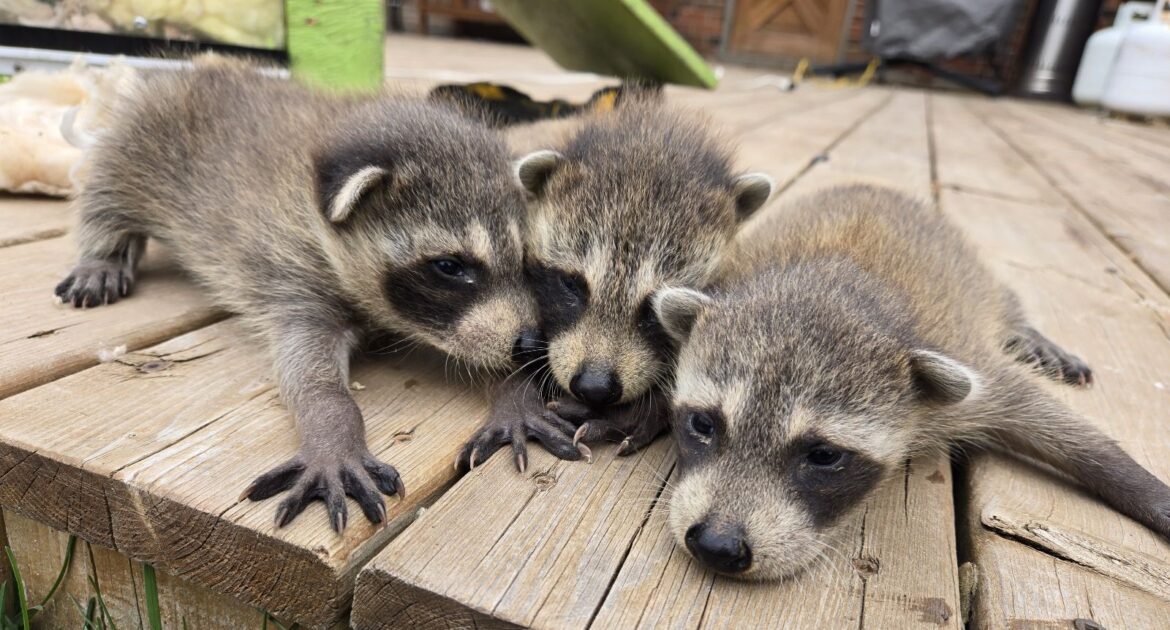You’ve probably seen those cute masked bandits waddling across your yard at night. But have you ever wondered about their family life?
Baby raccoons, called kits, have fascinating relationships with their mothers. Understanding raccoon family behavior can help you know what to expect if these animals move into your neighborhood.
Baby raccoons stay with their mothers for about 10 to 16 months. This might seem like a long time, but these little ones have lots to learn before they can survive on their own.
The journey from helpless baby to independent adult happens in stages. Each stage teaches them important skills they’ll need for life.
When do raccoons leave their mother exactly? Most young raccoons become independent during their first fall or winter. However, some stay until the following spring.
The timing depends on several factors, including food availability, weather conditions, and how quickly each kit learns survival skills. This extended family time is crucial for developing proper raccoon parenting habits that they’ll use with their own babies someday.
At Skedaddle Humane Wildlife Control in Minneapolis, we’ve seen firsthand how raccoon families interact and grow. Knowing when raccoons leave their mother and how they develop can help you better understand these animals and the challenges they might bring to your property.
In this blog, we’ll explore how long baby raccoons stay with their mothers, the stages of their development, and what this means for homeowners.
The Early Days: Helpless and Dependent
Raccoon babies are born completely helpless. They can’t see, hear, or even regulate their own body temperature. For the first few weeks of life, these tiny kits depend entirely on their mother for everything.
During this early period:
- Mother raccoons rarely leave the den
- Kits nurse constantly to grow strong
- Eyes don’t open until about 18 to 24 days old
- Ears open around the same time as eyes
- Weight increases rapidly from birth
The mother raccoon becomes extremely protective during this time. She’ll move her babies to new dens if she feels threatened. This behavior helps keep the family safe from predators and other dangers.
Learning to Walk and Explore
Around 8 to 10 weeks old, young raccoons start becoming more active. They begin exploring their den and learning to use their paws. These early weeks are like preschool for raccoons. Everything is new and exciting.
You might notice young raccoons during this stage because they’re starting to follow mom on short trips. They’re still nursing, but they’re also watching everything she does. This observation time is critical for learning survival skills.
Mother raccoons are patient teachers. They show their kits how to climb, where to find food, and what dangers to avoid. These lessons happen gradually over many months.
The First Big Adventure: Leaving the Den
Between 12 to 16 weeks old, raccoon families start leaving their dens together regularly. This is when you’re most likely to see a whole family of raccoons in your yard. The mother leads these expeditions, with babies following closely behind.
These family outings serve important purposes:
- Teaching kits how to find food
- Showing safe routes through the territory
- Identifying dangerous areas to avoid
- Building confidence in young raccoons
- Strengthening family bonds
During these adventures, young raccoons learn what foods are good to eat. They discover how to open garbage cans, find insects under logs, and catch small fish in streams. These skills take months to master.
Fall Lessons: Preparing for Independence
As summer turns to fall, raccoon family behavior starts changing. The mother begins teaching more advanced survival skills. Young raccoons must learn these lessons well because winter can be harsh.
Fall is when serious training happens. Mother raccoons show their kits:
- How to find winter shelters
- Where to locate food when it’s scarce
- Which areas are safest during cold weather
- How to store body fat for winter survival
This season is crucial for determining when raccoons leave their mother. Kits who learn quickly may become independent earlier. Those who need more time might stay with mom until spring.
The Natural Separation Process
Most young raccoons naturally separate from their mothers during late fall or early winter. This timing makes sense because it’s after breeding season but before the next litter arrives. The separation usually happens gradually rather than all at once.
Signs that separation is beginning:
- Young raccoons spend more time alone
- Mother becomes less tolerant of their presence
- Siblings start going different directions
- Each raccoon begins marking its own territory
This process is completely natural. Mother raccoons don’t abandon their young – they’ve simply taught them everything they need to know. The kits are ready to start their own lives.
Male vs. Female Differences
Interestingly, male and female raccoons often leave their mothers at different times. Young males usually leave earlier and travel farther from home. They’re more likely to become independent during their first fall.
Female raccoons often stay closer to home longer. Some remain near their mother’s territory even after becoming independent. This behavior helps them learn more about raising babies before having their own litters.
These differences in raccoon parenting habits affect when you might see young raccoons on your property. Males searching for new territories might show up unexpectedly. Females often return to familiar areas.
What This Means for Homeowners
Understanding when raccoons leave their mother helps you deal with wildlife situations better. If you see a family of raccoons on your property in late summer, you know the babies will likely leave naturally within a few months.
However, waiting isn’t always the best option. Raccoon families can cause significant damage while teaching survival skills to their young. They might:
- Tear holes in roofs or siding
- Damage insulation in attics
- Leave droppings that carry diseases
- Create noise disturbances at night
Our professional wildlife control becomes important when raccoon families move into human structures. At Skedaddle Humane Wildlife Control, we understand raccoon family behavior. We use methods that respect the natural bond between mothers and babies while protecting your property.
Why Professional Help Matters
Raccoon families require special handling. You can’t simply remove the mother and expect babies to survive. Young raccoons who haven’t learned proper survival skills will likely die if separated too early from their mother.
Our professional wildlife control technicians know how to assess each situation. They can determine if young raccoons are old enough to survive independently. When raccoon families need to be relocated, our experts ensure everyone stays together until natural separation occurs.
At Skedaddle, we use one-way doors that allow raccoons to leave structures but prevent them from returning. This method respects natural family dynamics while solving human-wildlife conflicts effectively.
Ready to Solve Your Raccoon Problem?
Raccoon family behavior is complex and fascinating. These intelligent animals invest almost a year teaching their young everything needed for survival. Understanding when raccoons leave their mother helps you make better decisions about wildlife conflicts on your property.
If raccoon families have moved into your Minneapolis home, don’t wait for natural separation to solve the problem. The damage they cause during those months can be extensive and costly. Professional wildlife control protects both your property and the animals involved.
Contact Skedaddle Humane Wildlife Control in Minneapolis today to request an estimate. Our experienced team understands raccoon family behavior and knows how to handle these situations safely and humanely. We’ll help you reclaim your space while ensuring these remarkable animals can continue their natural life cycle in appropriate locations.




